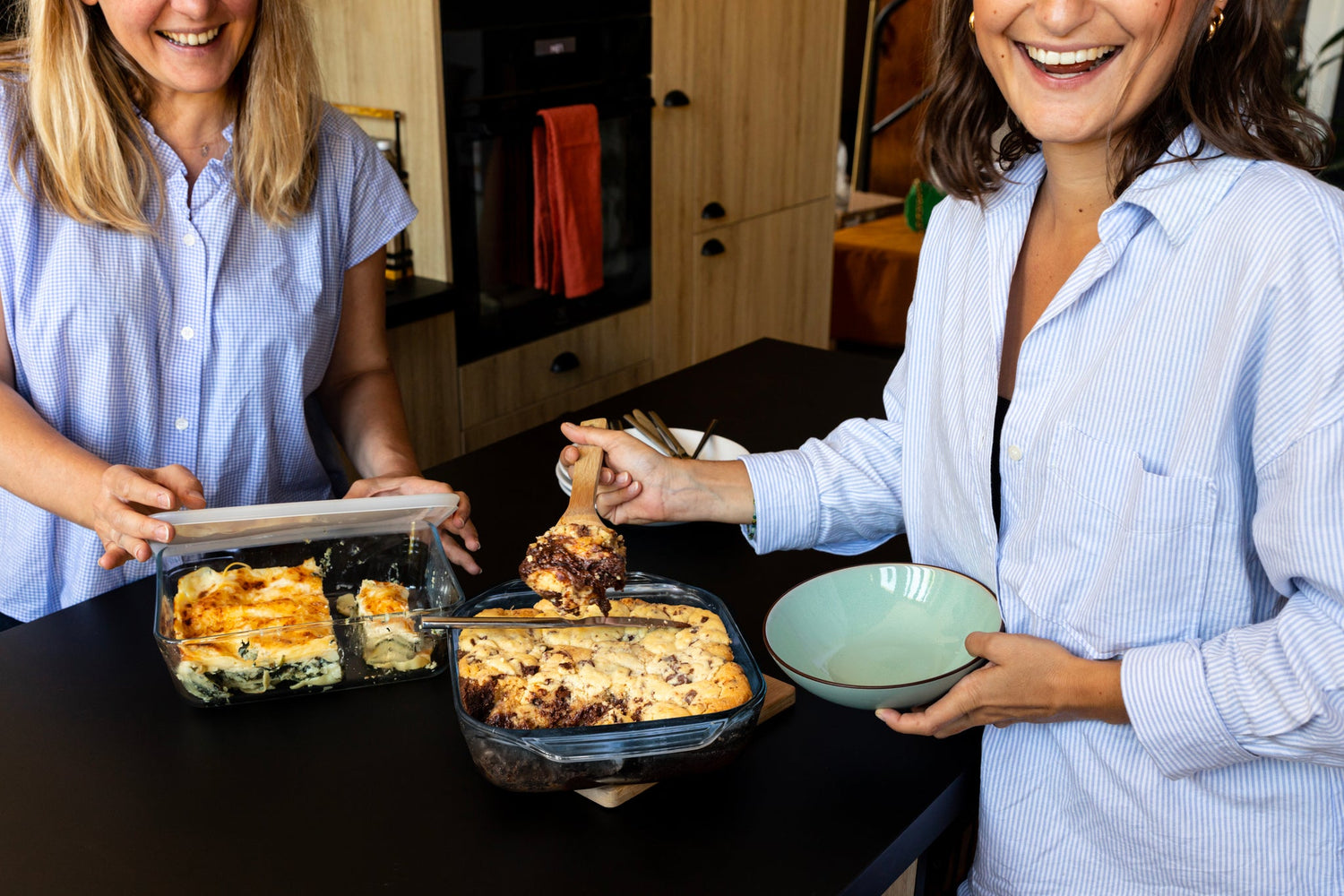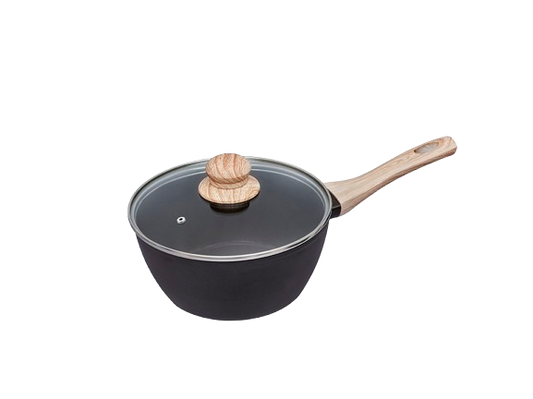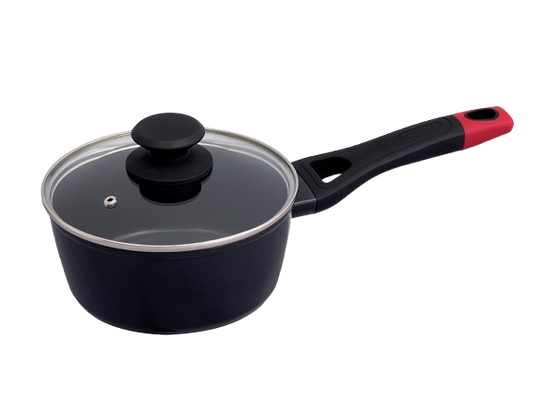Pyrex® saucepan: how to choose the right one?
Alongside the frying pan, the saucepan is one of the most frequently used kitchen utensils. Are your old saucepans starting to show signs of wear? Then it’s probably time to replace all or part of your cookware set with a series of Pyrex® saucepans.
How do you choose the right Pyrex® saucepan, and how are they made? Which size should you buy? What can you cook in a saucepan? We answer all your questions in this special Pyrex® saucepan guide.
The different uses of a saucepan
Today, a saucepan is mainly used to cook pasta, rice, potatoes, and other grains. It is also perfect for cooking vegetables, preparing sauces, making compotes, and even whipping up dessert creams. It can also be used for bain-marie cooking or reducing sauces, thanks to its perfectly flat base (available in different diameters) and its tall, straight sides.
While saucepans were not originally made from 100% recycled aluminium or full aluminium with a non-stick coating — like today’s Pyrex® saucepans — they have now become cookware adapted to modern cooking methods. A typical saucepan set usually includes three pans of different diameters, and can be completed with a Pyrex® wok, sauté pan, and stewpot.
How to choose the right Pyrex® saucepan
What Pyrex® brings to your saucepan choice
-
Every saucepan comes with a lid: Pyrex® saucepans are known for using innovative materials selected as part of the brand’s commitment to environmental responsibility. Some Pyrex® saucepans are made from 100% recycled aluminium. Each one comes with a transparent lid, allowing you to monitor your cooking at a glance without lifting it. The lid also retains steam, which can gently escape through the small vent provided.
-
A high-quality PFAS-free coating: unlike standard saucepans, the Pyrex® range combines a high-performance non-stick coating with a 10-year guarantee against manufacturing defects. Free from PFAS, this ensures healthy cooking without the “forever chemicals” often found in traditional coatings.
-
A handle designed for comfort and grip: Pyrex® has paid special attention to the design of its saucepan handles, ensuring a secure and comfortable hold. You can even choose from different handle styles to match your range of saucepans, frying pans, stewpots, or woks.
-
Compatible with all hobs: whether you cook on electric, gas, ceramic, induction, or halogen, the base of every Pyrex® saucepan is fully compatible with all modern heat sources.
-
Easy cleaning: thanks to its PFAS-free non-stick coating, every Pyrex® saucepan is quick and easy to clean. A soft sponge, washing-up liquid, and hot water are all you need.
Which Pyrex® saucepan diameter should you choose?
The diameter of your saucepan should always match the size of the hob ring you’re using. This prevents damage to the outside of the pan and reduces the risk of burns when handling it. The right diameter also depends on the dish you’re preparing.
All Pyrex® ranges are available in 16 cm, 18 cm, and 20 cm diameters to suit every type of recipe. As mentioned earlier, each comes with a matching lid and handle.
Pyrex® saucepan range
Pyrex® saucepans are available in 16, 18, and 20 cm sizes. You can choose between aluminium or 100% recycled aluminium models, all featuring a PFAS-free non-stick coating. Their design is perfectly suited to all types of cooking, making it easy to cook and stir food for healthy, everyday meals.
Each saucepan comes with a lid adapted to its diameter, allowing for gentle, covered cooking while letting out a fine stream of steam — or for reheating leftovers. The ergonomic handle ensures a secure, comfortable grip, with no risk of slipping from your hand.
Why choose a PFAS-free Pyrex® non-stick saucepan?
Founded in 1915 and quickly recognised for its borosilicate glass ovenware, Pyrex® now offers a wide range of products adapted to modern cooking needs — including saucepans, frying pans, sauté pans, stewpots, and woks. Of course, the brand’s legendary oven dishes and casserole dishes are still available on the Pyrex® website.
Every Pyrex® saucepan is carefully crafted before reaching your kitchen, guaranteeing perfect preparation and cooking results. Each one is:
-
Made of 100% aluminium or 100% recycled aluminium
-
Equipped with a PFAS-free non-stick coating
-
Designed with a handle available in two finishes
-
Lightweight for easy handling
-
Easy to clean
-
Compatible with all hobs, including gas and induction
-
Covered by a 10-year guarantee against manufacturing defects
What can you cook in a Pyrex® saucepan?
The advantage of the Pyrex® saucepan’s non-stick coating is that it allows you to prepare a wide variety of recipes without food sticking to the bottom. This is particularly useful for slow-cooked dishes, which can be prepared gently with the lid adapted to each saucepan size.
For slow cooking, you can prepare:
-
Creamy sauces that need to reduce slowly
-
Stews simmered over a low heat
-
Compotes and fruit-based recipes cooked gently
-
Leftovers from the day before, reheated with ease
For quick preparations, a saucepan is ideal for:
-
Making béchamel to top a gratin (in a Pyrex® oven dish, of course!)
-
Cooking pasta, rice, or potatoes in water
-
Bain-marie cooking in a stewpot for delicate sauces
-
Sautéing vegetables or steaming them with the lid on
For sweet recipes, the non-stick coating is especially practical. You can use it to cook:
-
Fruit compotes, keeping their smooth texture with the lid
-
Creams such as crème anglaise or custard
-
Choux pastry
-
Light jams if you don’t have a dedicated jam pan
-
Caramel, which won’t stick to the bottom thanks to the non-stick coating
This makes your Pyrex® saucepan an essential ally in the kitchen — versatile, practical, and easy to clean thanks to its high-quality coating, without the need for harsh detergents or abrasive sponges.
Healthier cooking with a Pyrex® saucepan
The PFAS-free Pyrex® non-stick coating allows you to reduce the amount of fat you need when cooking, making your meals lighter and easier to digest. The only precaution is to always add a little oil, butter, or margarine to the base before heating, and never exceed 230 °C to avoid damaging the coating.











